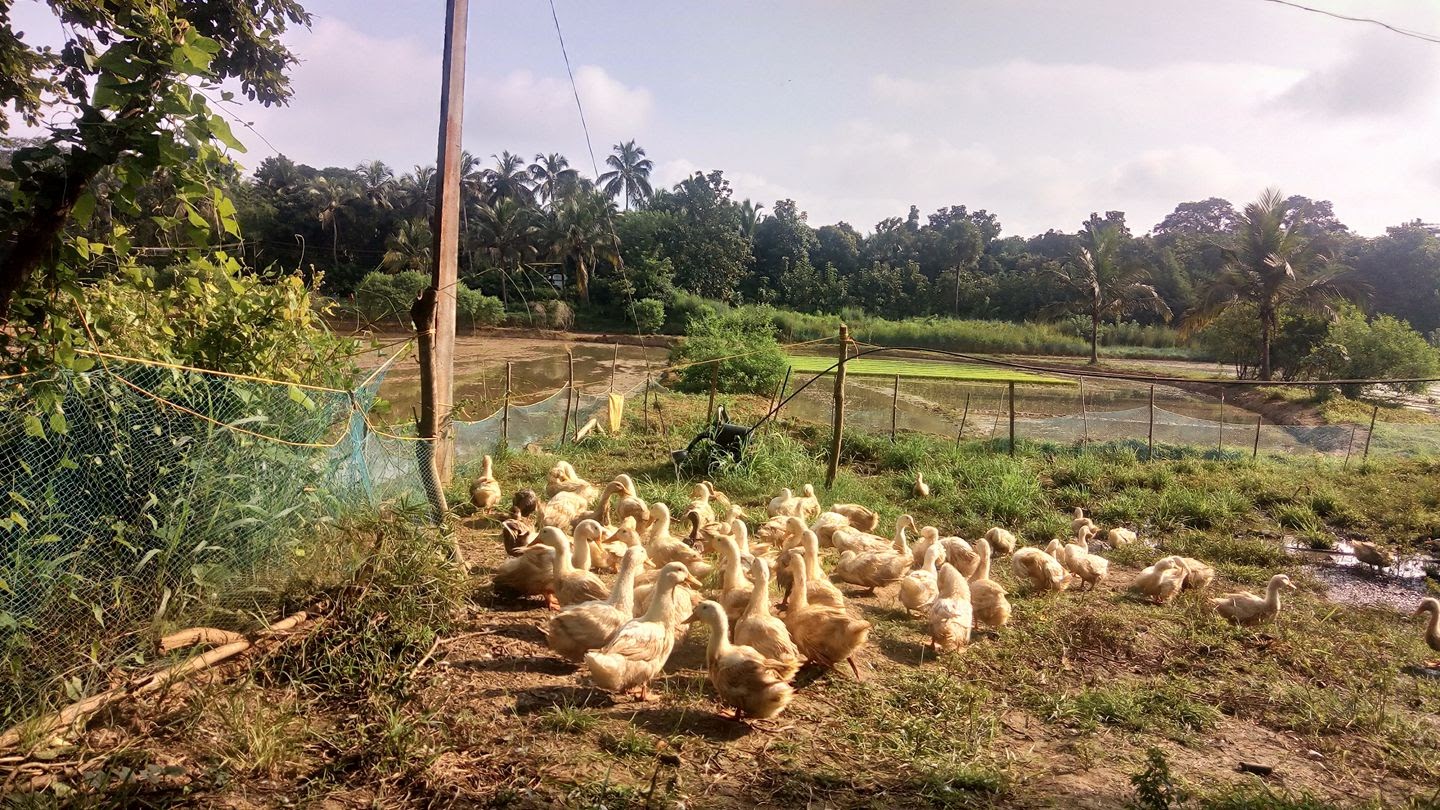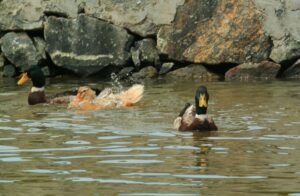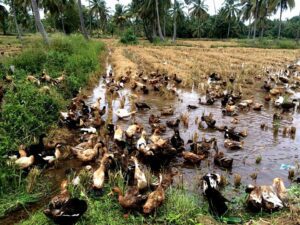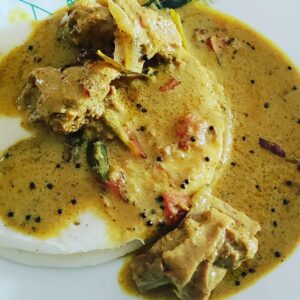Regular outbreaks of bird flu over the last nine years has crippled the sector for a long time and forced farmers to move away.

Ducks of Kuttanad. (KA Shaji)
As the Christmas season draws to a close, epicureans of central and southern Kerala have cause for celebration. After a prolonged hiatus, their beloved Kuttanadan duck has reclaimed its spot on the festive menu.
This absence, a consequence of recurrent avian influenza (aka bird flu) outbreaks compounded by the Covid-19-induced lockdowns, left Christmas platters bereft of the coveted Kuttanadan duck curries, roasts, and “mappases” for the past four years — a void keenly felt in Kuttanad, the below-sea-level backwater region of Alappuzha district.

Kuttanadan ducks. (KA Shaji)
Food lovers in Kerala’s central and southern regions have always preferred the Kuttanadan duck over the hybrids and broilers available in the open market, especially those imported from countries like Vietnam.
The distinctive Kuttanadan duck gets its reputation from the water that logs the region throughout the year and everything else there, including the paddy that the local cultivators are farming.
The locally-grown ducks are lean and not very meaty in the Kuttanad area, which also comprises portions of the Kottayam and Pathanamthitta districts. They contrast sharply with hybrids and broilers available in the rest of the country.
Epicureans say that these ducks also have an acquired and distinct taste, and they take centre stage on most dining tables during Christmas, New Year, and Easter.
Thiruvananthapuram-based environmentalist Thomas Lawrence, who hails from Kuttanad, tells South First that the flesh of the Kuttanadan duck is unique because of the things it consumes from the water, such as insects, small fish, and grains leftover from harvesting and threshing.
He says that its complete submersion in water for most of the time is, of course, the crucial component.

Ducks of Kuttanad. (KA Shaji)
“The duck from Kuttanad is always the hero because of how it is raised rather than how it is prepared. You can cook it any way, as the other duck varieties are being cooked worldwide, but in taste, the Kuttanad duck will stand apart,” PN Somalatha, a retired educationist in Thiruvananthapuram who hails from Anchal in Kollam, tells South First.
“The bony Kuttanadan duck requires some acclimatisation for those with palates accustomed to soft, boneless meats,” she warns.
Kuttanad’s most popular and traditional duck dish is a curry cooked with coriander powder, pepper, coconut milk, and green chilis. It has a deep green colour. Duck mappas and varutharacha roast, including red chili, cinnamon, bay leaf, cardamom, cloves, pepper, star anise, and fennel, are well-liked dishes. Mappas is a gravy-based dish with a hint of spicin that uses coconut milk.
The duck is raised in the backwaters among the rice fields of Kuttanad. Compared to grill ducks, which can weigh up to two kg, these are not enormous; they weigh between 800 and 1,250 gm at maturity.
Duck is considered healthier and tastier than chicken, maybe because of its higher fat content.
As the Christmas season unfolds, duck farmers in Kuttanad and Upper Kuttanad find renewed hope for a brighter future, with orders pouring in even from northern Kerala regions like Thrissur, Palakkad, Kannur, and Kozhikode.
According to the farmers, duck farming has not returned to pre-bird flu levels, with several big farmers (those who used to rear a flock size of 2,000 or above) staying away or reducing their flock size because of the fear of another outbreak of avian flu or any other zoonotic disease.
Some of them could not raise the required number of ducks because of the lack of funds caused by the continuing delay in getting the promised compensation from the state government for the last two annual outbreaks of bird flu.
However, farmers say that the demand was high this Christmas and there are bookings for the fast-approaching New Year.
“I reared 3,500 ducks this time and wholesale dealers bought them at ₹200 per duck. At the counter at my farm, I sold each duck for ₹320 to those who approached me directly. After a couple of tumultuous years, the sector is showing signs of resurrection,” says MP Xavier, a duck farmer from Kainakari in Kuttanad, to South First.
Six bird flu outbreaks have occurred in the area over the past nine years and the Covid-19 lockdown made the situation even more difficult. Certain zoonotic diseases that surfaced in Alappuzha have also contributed to the campaign that says “ducks are unsafe”.

Duck curry and Appam, Kuttanad style. (KA Shaji)
The bird flu outbreaks in 2014 and 2016 led to the culling of around 8 lakh ducks and, after a brief respite, the region witnessed three more outbreaks between January 2021 and October 2022, resulting in the loss of another 2.5 lakh ducks.
The most recent reports, originating in Vazhuthanam and Alappuzha, culminated in the culling of over 80,000 ducks, marking a setback to the efforts of duck farmers.
Before 2021, big duck farmers and several small farmers used to grow between four and five lakh birds (mostly Chara and Chemballi — two local breeds) a season.
B Rajasekharan, President of Aikya Tharavu Karshaka Sangham, tells South First that it is not the case anymore.
“The number of big duck farmers has dwindled drastically. Only around 50 remain in the region. This season, they have grown around 1.5 lakh birds, far less than pre-bird flu times. In the meantime, the number of small farmers has increased, but the overall production will not reach near the previous levels,” he rues.
“Many duck farmers were forced to skip farming this time, following a delay in getting compensation for the birds lost a year ago. There are no words to express the government’s apathy towards the sector,” says Rajasekharan.
Following the previous avian bird flu outbreaks, the government had given compensation of ₹200 for each bird above 60 days and ₹100 for birds below 60 days. Besides, ₹5 was given for each destroyed egg.
The Animal Husbandry Department blamed the fund crunch in the state government for the delay in compensating the farmers.

May 19, 2024

May 19, 2024

May 19, 2024

May 19, 2024

May 19, 2024

May 19, 2024